Ditapis dengan
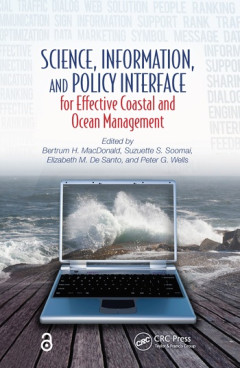
Science, information, and policy interface for effective coastal and ocean ma…
Science, Information, and Policy Interface for Effective Coastal and Ocean Management presents a wealth of knowledge that enhances current best practices to achieve more effective communication and use of marine environmental information. Useful to all major groups in the policy-making process, from senior policy- and decision-makers to practitioners in coastal and ocean management, it helps to…
- Edisi
- -
- ISBN/ISSN
- 9781498731706
- Deskripsi Fisik
- xxxvii, 474p. : ill.
- Judul Seri
- -
- No. Panggil
- 333.9164 SCI s

Learning from agri-environment schemes in Australia :investing in biodiversit…
Learning from agri-environment schemes in Australia is a book about the birds and the beef — more specifically it is about the billions of dollars that governments pay farmers around the world each year to protect and restore biodiversity. After more than two decades of these schemes in Australia, what have we learnt? Are we getting the most out of these investments, and how should we do thin…
- Edisi
- -
- ISBN/ISSN
- 9781760460167
- Deskripsi Fisik
- xxvii, 310p. : ill.
- Judul Seri
- -
- No. Panggil
- 333.95160994 LEA l
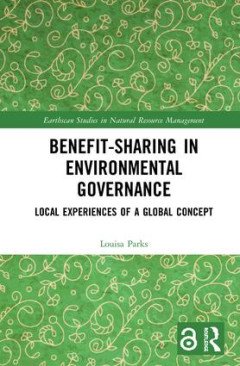
Benefit-sharing in environmental governance :local experiences of a global co…
Taking a bottom-up perspective, this book explores local framings of a wide range of issues related to benefit-sharing, a growing concept in global environmental governance. Benefit-sharing in Environmental Governance draws on original case studies from South Africa, Namibia, Greece, Argentina, and Malaysia to shed light on what benefit-sharing looks like from the local viewpoint. These loca…
- Edisi
- -
- ISBN/ISSN
- 9780429198311
- Deskripsi Fisik
- vi, 208p. : ill.
- Judul Seri
- -
- No. Panggil
- 333.7 PAR b

Raffles' ideas on the land rent system in Java and the Mackenzie land tenure …
This study was suggested by Dr H. R. C. Wright's artic1e "Muntinghe's Advice to Raffles on the Land Question in Java".1 It does not pretend to be exhaustive. I have not examined the working of the land rent system during the British administration/~ nor, in deed, have I carried the story further than the early months of 1814. I hope that at some future date it may be possible to analyse t…
- Edisi
- -
- ISBN/ISSN
- 9789004286368
- Deskripsi Fisik
- viii, 193p.: ill.
- Judul Seri
- -
- No. Panggil
- 306 BAS r

Planning for ecosystem services in cities
This open access book presents current knowledge about ecosystem services (ES) in urban planning, and discusses various urban ES topics such as spatial distribution of urban ecosystems, population distribution, and physical infrastructure properties. The book addresses all these issues by: i) investigating to what extent ecosystem services are currently included in urban plans, and discussing w…
- Edisi
- -
- ISBN/ISSN
- 9783030200244
- Deskripsi Fisik
- ix, 87p. : ill.
- Judul Seri
- -
- No. Panggil
- 333.7 PLA p
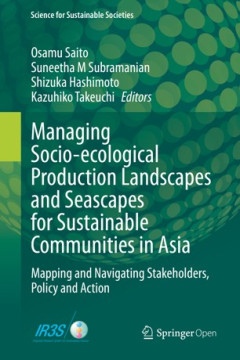
Managing socio-ecological production landscapes and seascapes for sustainable…
This open access book presents up-to-date analyses of community-based approaches to sustainable resource management of SEPLS (socio-ecological production landscapes and seascapes) in areas where a harmonious relationship between the natural environment and the people who inhabit it is essential to ensure community and environmental well-being as well as to build resilience in the ecosystems tha…
- Edisi
- -
- ISBN/ISSN
- 9789811511332
- Deskripsi Fisik
- x, 179p. : ill.
- Judul Seri
- -
- No. Panggil
- 333.7 MAN m
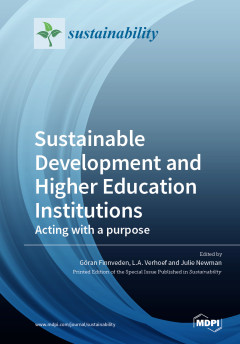
Sustainable development and higher education institutions :acting with a purpose
Higher education institutions (HEIs) have a unique role and responsibility for the future and for driving the development of a sustainable society. HEIs are charged with the task of fostering sustainability in the leaders of tomorrow, developing solutions and methods for addressing a sustainable future and ensuring that knowledge is contributed to society. HEIs must also ensure that their every…
- Edisi
- -
- ISBN/ISSN
- 9783039219056
- Deskripsi Fisik
- IX, 307 p.
- Judul Seri
- -
- No. Panggil
- 379 FIN s
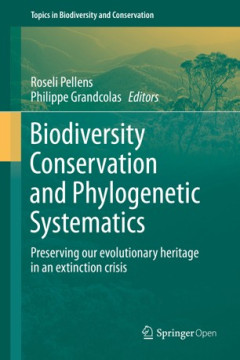
Biodiversity conservation and phylogenetic systematics :preserving our evolut…
Phylogenetic diversity is now a key concept for biodiversity conservation due to its link to option value, evolutionary potential and to the possibility of guiding conservation across scales. Present facilities for obtaining molecular sequences and metagenomes are powering this research field, rendering available detailed information of phylogenetic diversity for a wide taxonomic sample in a sh…
- Edisi
- -
- ISBN/ISSN
- 9783319224619
- Deskripsi Fisik
- XVII, 390 p.
- Judul Seri
- -
- No. Panggil
- 333.95 BIO b

Economic evaluation of sustainable development
This book presents methods to evaluate sustainable development using economic tools. The focus on sustainable development takes the reader beyond economic growth to encompass inclusion, environmental stewardship and good governance. Sustainable Development Goals (SDGs) provide a framework for outcomes. In illustrating the SDGs, the book employs three evaluation approaches: impact evaluatio…
- Edisi
- -
- ISBN/ISSN
- 9789811363894
- Deskripsi Fisik
- xxiii, 145p. : ill.
- Judul Seri
- -
- No. Panggil
- 338.927 THO e
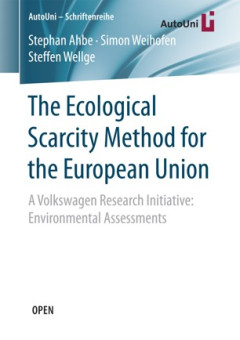
The ecological scarcity method for the European Union :a Volkswagen research …
This report transfers the Ecological Scarcity Method (ESM) to the EU and its 28 member states. It provides a powerful tool for unbiased environmental assessments in enterprises and surveys the current impacts and the targets published by environmental authorities, specifically the European Environment Agency. ESM assesses environmental impacts of manufacturing sites and production processes. De…
- Edisi
- -
- ISBN/ISSN
- 9783658195069
- Deskripsi Fisik
- xiv, 93p. : ill.
- Judul Seri
- -
- No. Panggil
- 333.714094 AHB e
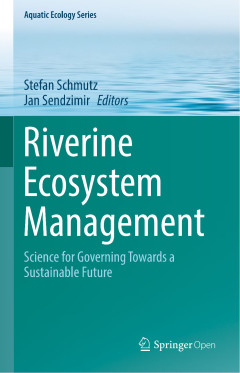
Riverine ecosystem management :science for governing towards a sustainable fu…
This open access book surveys the frontier of scientific river research and provides examples to guide management towards a sustainable future of riverine ecosystems. Principal structures and functions of the biogeosphere of rivers are explained; key threats are identified, and effective solutions for restoration and mitigation are provided. Rivers are among the most threatened ecosystems of…
- Edisi
- -
- ISBN/ISSN
- 9783319732503
- Deskripsi Fisik
- vii, 571p. : ill.
- Judul Seri
- -
- No. Panggil
- 577.64 RIV r
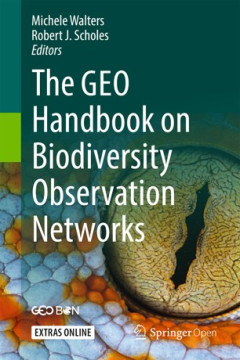
The GEO handbook on biodiversity observation networks
Biodiversity observation systems are almost everywhere inadequate to meet local, national and international (treaty) obligations. As a result of alarmingly rapid declines in biodiversity in the modern era, there is a strong, worldwide desire to upgrade our monitoring systems, but little clarity on what is actually needed and how it can be assembled from the elements which are already present. T…
- Edisi
- -
- ISBN/ISSN
- 9783319272887
- Deskripsi Fisik
- xii, 326p. : ill.
- Judul Seri
- -
- No. Panggil
- 577 GEO g
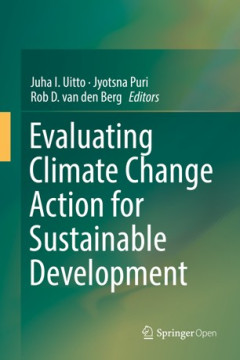
Evaluating climate change action for sustainable development
This authoritative book presents the ever progressing state of the art in evaluating climate change strategies and action. It builds upon a selection of relevant and practical papers and presentations given at the 2nd International Conference on Evaluating Climate Change and Development held in Washington DC in 2014 and includes perspectives from independent evaluations of the major internation…
- Edisi
- -
- ISBN/ISSN
- 9783319437026
- Deskripsi Fisik
- xxiv, 355p. : ill.
- Judul Seri
- -
- No. Panggil
- 363.73874 EVA e

Water resources systems planning and management :an introduction to methods, …
This revised, updated textbook presents a systems approach to the planning, management, and operation of water resources infrastructure in the environment. Previously published in 2005 by UNESCO and Deltares (Delft Hydraulics at the time), this new edition, written again with contributions from Jery R. Stedinger, Jozef P. M. Dijkman, and Monique T. Villars, is aimed equally at students and pro…
- Edisi
- -
- ISBN/ISSN
- 9783319442341
- Deskripsi Fisik
- xx, 624p. : ill.
- Judul Seri
- -
- No. Panggil
- 333.91 LOU w

High mountain conservation in a changing world
This book aims to provide case studies and a general view of the main processes involved in the ecosystem shifts occurring in the high mountains, and to analyse the implications for nature conservation. Although case studies from the Pyrenees are preponderant, conclusions are aimed at any mountain range surrounded by highly populated lowland areas. The chapters give emphasis to approaches from …
- Edisi
- -
- ISBN/ISSN
- 9783319559827
- Deskripsi Fisik
- xiv, 413p. : ill.
- Judul Seri
- -
- No. Panggil
- 577.53 HIG h
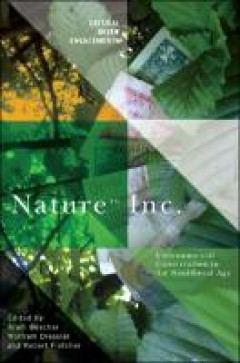
Nature Inc:environmental conservation in the neoliberal age
With global wildlife populations and biodiversity riches in peril, it is obvious that innovative methods of addressing our planet’s environmental problems are needed. But is “the market” the answer? Nature™ Inc. brings together cutting-edge research by respected scholars from around the world to analyze how “neoliberal conservation” is reshaping human–nature relations.
- Edisi
- -
- ISBN/ISSN
- 9780816539215
- Deskripsi Fisik
- 278 pages : illustrations ; 24 cm.
- Judul Seri
- -
- No. Panggil
- 363.7 NAT n

Peran matematika, sains, dan teknologi dalam mencapai tujuan pembangunan berk…
Tujuan Pembangunan Berkelanjutan (Sustainable Development Goals/SDGs) merupakan rangkaian agenda pembangunan berkelanjutan mulai tahun 2015 sampai 2030. SDGs terdiri atas 17 tujuan yang disepakati pada September 2015 oleh negara-negara anggota PBB, akan memandu pencapaian tujuan global yakni pembangunan berkelanjutan hingga tahun 2030. SDGs sesungguhnya disusun berdasarkan capaian Tujuan Pemban…
- Edisi
- -
- ISBN/ISSN
- 9786023923281
- Deskripsi Fisik
- xiv, 359p. : ill.
- Judul Seri
- -
- No. Panggil
- 307.1 PER p

Grading goal four :tensions, threats, and opportunities in the sustainable de…
For the third time in three decades world leaders reaffirmed their promise of "Education For All" when adopting Sustainable Development Goal 4 in 2015. It is the most far-reaching commitment to quality and equity in education so far, yet, there is no consensus on what the agenda means in practice. With a decade left until the 2030 deadline, Grading Goal Four calls upon the education communi…
- Edisi
- -
- ISBN/ISSN
- 9789004430365
- Deskripsi Fisik
- xxviii, 469 p. : ill.
- Judul Seri
- -
- No. Panggil
- 379 GRA g

Bats in the anthropocene :conservation of bats in a changing world
This book focuses on central themes related to the conservation of bats. It details their response to land-use change and management practices, intensified urbanization and roost disturbance and loss. Increasing interactions between humans and bats as a result of hunting, disease relationships, occupation of human dwellings, and conflict over fruit crops are explored in depth. Finally, contribu…
- Edisi
- -
- ISBN/ISSN
- 9783319252209
- Deskripsi Fisik
- ix, 606p. : ill.
- Judul Seri
- -
- No. Panggil
- 639.9794 BAT b
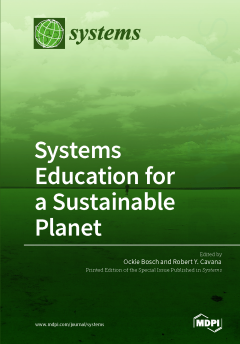
Systems Education for a Sustainable Planet
The issues facing humanity have become increasingly complex due to the fact they are embedded in a global web of ecological, economic, social, cultural and political processes that are dynamically interlinked. The capacity to conceptualise and redesign solutions, in systems and sustainability terms, will increasingly be what society and employers expect. This “expectation” is globally one o…
- Edisi
- -
- ISBN/ISSN
- 9783038427902
- Deskripsi Fisik
- vii, 239p.: ill.
- Judul Seri
- -
- No. Panggil
- 370 SYS s
 Karya Umum
Karya Umum  Filsafat
Filsafat  Agama
Agama  Ilmu-ilmu Sosial
Ilmu-ilmu Sosial  Bahasa
Bahasa  Ilmu-ilmu Murni
Ilmu-ilmu Murni  Ilmu-ilmu Terapan
Ilmu-ilmu Terapan  Kesenian, Hiburan, dan Olahraga
Kesenian, Hiburan, dan Olahraga  Kesusastraan
Kesusastraan  Geografi dan Sejarah
Geografi dan Sejarah